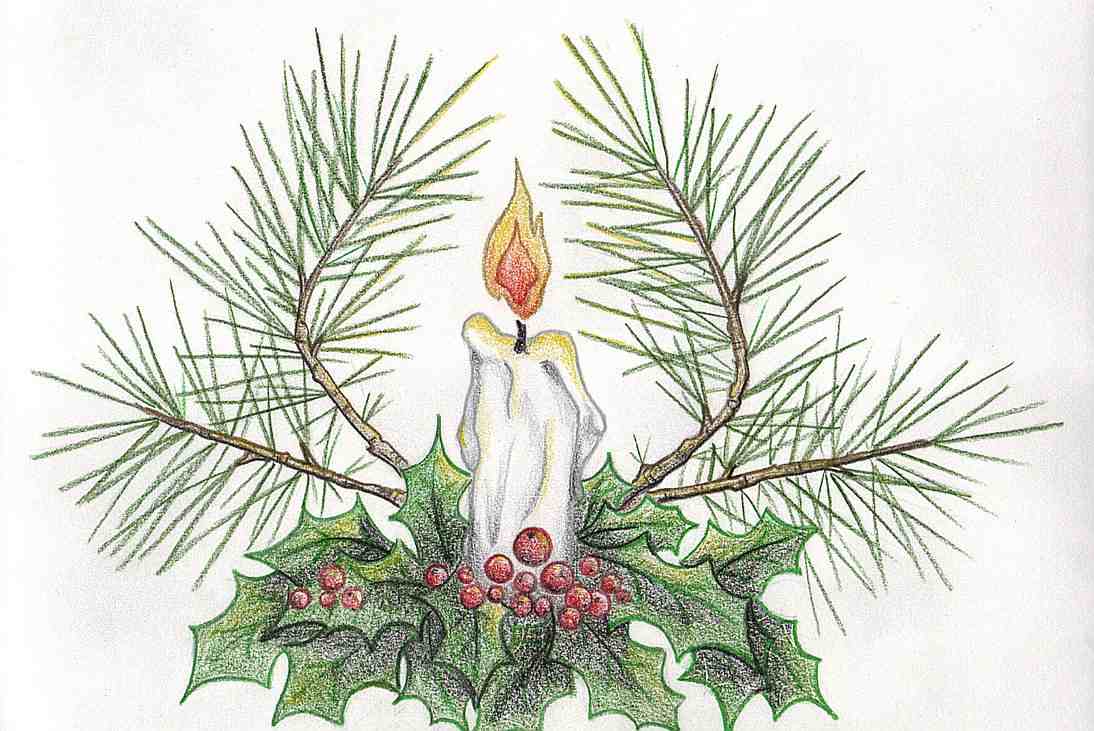shirleytwofeathers
Those born in the month of March have the honor of calling the daffodil and the jonquil their birth flowers. Although the plants are from the same family, and are thus very similar, you can tell the difference between them by examining the leaves. Daffodils sport slim, sword-tipped foliage and jonquils have slender leaves with rounded tips.
Daffodils and Jonquils are suitable altar decorations for any rituals celebrating the coming of spring and suitable offerings for solar deities, water and nature spirits, especially those identified as female. It should be noted that daffodils are toxic, especially the bulbs and can cause irritation to the skin and so should be used with appropriate caution.
- Sprinkle dried petals or place fresh flowers on an altar to attract friendly spirits.
- Keep in the house or garden to cheer you up.
- Wear a daffodil in your breast pocket for luck and to have a cheerful mood follow you all day.
- Add to bathwater to increase your luck and bring new people into your life.
- A bouquet of daffodils in the bedroom may increase fertility.
- Mix with rose petals and place around a photo of a lover you want to return to you.
- Keep freshly cut daffodils in a vase in your home to bring about abundance.
- Place daffodils on your altar during workings related to love, especially if it’s a new relationship and you’re still trying to figure out how to navigate the waters.
- Add potted daffodil bulbs, don’t worry if they’re blooming yet, to your altar for spring celebrations, along with other spring flowers such as forsythia, crocus, and snowdrops.
- Wear this flower close to your heart to draw love, but be careful that your love is not one-sided.
Daffodil
The daffodil is the March birth flower and the meaning it holds is friendship and domestic happiness.
The daffodil symbolizes new beginnings, rebirth, and the arrival of spring thanks to it being one of the first perennials to blossom after the winter frost. And, along with creativity and renewal, it has also come to represent forgiveness, inspiration, and memory. Daffodils are also representative of inner reflection and an awareness of oneself.
Symbolizing rebirth, resurrection, renewal and new beginnings, the daffodil is virtually synonymous with spring. Though their botanic name is narcissus, daffodils are sometimes called jonquils, and in England, because of their long association with Lent, they’re known as the “Lent Lily.”
The Daffodil is a calming flower that helps bring about inner peace, hope and, of course, self-love. It may also be used in spells related to unrequited love. To dream about seeing or picking daffodils is said to symbolize happiness and adoration.
Daffodil commonly refers to narcissus with large trumpets, but may be used for all types of narcissus. This is the official common name for ANY of the plants that fall into the genus Narcissus. So, if the plant is considered a Narcissus, it is also considered a daffodil as well.
In Victorian flower language daffodils signified regard and chivalry, whilst narcissi meant self esteem, female ambition or vanity.
Jonquil
Jonquils usually have one to five flowers per stem and short coronas. Look at where they are joined to the stem. It is almost a ninety degree angle from the stem to the flower.
These sweet-scented flowers are the most fragrant of all the Narcissus and many scented hybrids trace their fragrance back to them.
Roman mythology tells us that Pluto, the god of the underworld, kidnapped Persephone, who eventually became his queen, while she was picking lilies. In her fright at the ambush, she dropped her blooms, and they became jonquils when they hit the ground.
Jonquils have many meanings, and you can use any combination of these when presenting them to someone you care about!
For the Greeks they sometimes express sorrow and sympathy, so you could use them in a bouquet for someone who’s recently suffered a loss or undergone some trauma. In China, jonquils are symbolic of luck in the New Year and, for the March baby in your life, they symbolize domestic bliss and friendship.
Sources:
There is a lot to celebrate in March. This is a list of pretty much everything that goes on during the third month of the year. Many of these dates change from year to year. The days that change are marked with this » symbol.
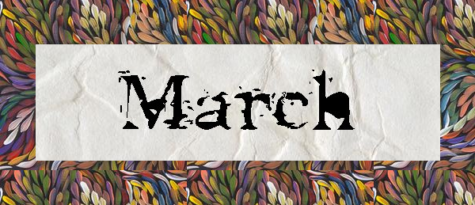
March Lore and General Info:

Astronomical Events
- 2 » New Moon
- 18 » Full Moon – Crow Moon, Storm Moon, Alder Moon
- 31 » New Moon
Astrological Events
Depending on which astrological system you adhere to, these are the signs that show up in March of 2022. Be aware that some of these dates will vary from year to year. Unlike the Sun signs which might just shift by 1 or 2 days, the dates of the various Moon signs will vary widely from year to year. The same holds true for the Chinese Zodiac. The Celtic Tree Signs are based on an arbitrary system and stay the same from year to year.
Western Astrology
The February Sun begins in Aquarius and finishes up in Pisces:
- Pisces: Feb 18 thru Mar 20 » Sun in Pisces
- Aries: Mar 20 thru Apr 20 » Sun in Aries
The March 2022 Moon cycles through the signs as follows. You will notice that the Moon might begin the day in one sign and by the end of the day may have moved into another sign, so timing matters if you are wanting to be precise:
The moon cycles through the signs are as follows:
- Aquarius: Feb 27 thru Mar 1 » Moon in Aquarius
- Pisces: Mar 1 thru Mar 4» Moon in Pisces
- Aries: Mar 4 thru Mar 6 » Moon in Aries
- Taurus: Mar 6 thru Mar 8 » Moon in Taurus
- Gemini: Mar 8 thru Mar 11 » Moon in Gemini
- Cancer: Mar 11 thru Mar 13 » Moon in Cancer
- Leo: Mar 13 thru Mar 16 » Moon in Leo
- Virgo: Mar 16 thru Mar 18 » Moon in Virgo
- Libra: Mar 18 thru Mar 20 » Moon in Libra
- Scorpio: Mar 20 thru Mar 22 » Moon in Scorpio
- Sagittarius: Mar 22 thru Mar 24 » Moon in Sagittarius
- Capricorn: Mar 24 thru Mar 27 » Moon in Capricorn
- Aquarius: Mar 27 thru Mar 29 » Moon in Aquarius
- Pisces: Mar 29 thru Mar 31» Moon in Pisces
- Aries: Mar 31 thru Apr 2 » Moon in Aries
The Celtic Tree Signs in February:
- Ash: Feb 18 to Mar 17 – Ash Tree Month
- Alder: Mar 18 to Apr 14 – Alder Tree Month
- Gorse: Mar 21 – Vernal Equinox – Gorse Tree Day
The Alternative Celtic Zodiac is as follows:
- Pine: Feb 21 – Mar 2
- Willow: Mar 3 – Mar 12
- Lime: Mar 13 – Mar 20
- Oak: Mar 21 (Vernal Equinox) – Sign of the Oak Tree
- Hazel: Mar 22 – Mar 31
The Chinese Calendar and Zodiac
We are currently in the year of the Black Water Tiger. Each Month is also assigned a specific animal. Here’s what shows up in March 2022.
- Tiger: Feb 4 – Mar 4 (Chinese Zodiac)
- Tiger: Feb 1 – Mar 2 (Lunar Calendar – 1st Lunar Month)
- Rabbit: Mar 5 – Apr 4 (Chinese Zodiac)
- Rabbit: Mar 3 – Mar 31 (Lunar Calendar – 2nd Lunar Month)
Note: The traditional Chinese Astrology birth chart is built by the Chinese Stem Branch Calendar, not the Chinese Lunar Calendar, which I think is really confusing. Because of a difference in time zones, the lunar months will have different pattern between China and the USA.

Lucky and Unlucky Days
You might want to plan moving, traveling, major purchases, court dates, and weddings around these dates, avoiding the unlucky days and utilizing the lucky ones.
- These are the lucky days in March:
10 and 24. - These are the unlucky days in March:
1, 2, 5, 8, 12, 14, 16, 28 and 29.
Fatal Days
The first the greedy glutton slays,
The fourth cuts short the drunkard’s days.
Quick Good Luck Chant
Bad luck turn and
Bad luck flee.
Only good fortune
Comes to Me.
Place a pinch of salt on your left shoulder.
Holidays and Holy Days
Many of the holidays begin on the eve of the night before and end on the eve of the day of. It’s also important to remember that the dates of archaic festivals and feast days may vary widely depending on the source.
March 1
- 1: Matronalia – the Festival of Women
- 1: New Year’s Day in the old Roman calendar.
- 1: Mother March
- 1: Feriae Marti – Festival of Mars
- 1 » Shrove Tuesday
- 1 » Mardi Gras
- 1 » Pancake Day
- 1 thru 9: Navajo Sing – Festival in which fields are blessed in preparation for planting.
March 2
- 2: Holy Wells Day – the day of Ceadda, the Celtic goddess of healing springs and holy wells.
- 2 » Night of Hekate Suppers
- 2 » Ash Wednesday
- 2 » The 40 days of Lent
- 2 » Holy Wednesday
- 2 » Ascent of the Christ of the Gypsies
March 3
- 3 » The Noumenia
- 3: Aegir’s Day (Teutonic) – sometimes called the Celtic Sea Festival
- 3 » Celebrate Artemis’ Birthday on the March Crescent Moon
- 3: Creation Day
- 3 » Nyepi Day
- 3 » Feast of Purification (Bali)
- 3: Momo no Sekku – Peach Festival
- 3: Hina Matsuri – Girl’s Festival, or Doll Festival
March 4
- 4 » Celebrating The Agathos Daimon
- 4: The Anestheria – Greek festival of flowers
- 4: Feast of Rhiannon
- 4: Maha Shivaratri – Great Night of Shiva, Vigil and feast for Transcendence
March 5
- 5: The Festival of Navigation – Navigium Isidis
- 5 » Excited Insects (Chinese Farmer’s Calendar)
- 5 » Running of the Reindeer (Alaska)
- 5: Blessing of the Fleets by Isis
March 6
- 6 » Moon enters Taurus
- 6 » Cheese Fare Sunday
- 6 » Forgiveness Sunday
March 7
- 7 » Clean Monday
- 7 thru 14: Lesser Eleusinian Mysteries. Old Greek festival celebrating the marriage of Goddess Kore and God Dionysos, following their return from Elysium.
March 8
March 10
- 10: The Daedala
- 10: Hypatia’s Day
March 11
- 11: Johnny Appleseed Day
- 11: Hercules’ Day
March 12
- 12: Marduk’s Feast Day
- 12 » Snake Saturday
March 13
- 13 » Orthodox Sunday
- 13 » Snake Sunday
March 14
- 14: The Diasia to ward off poverty – Greece.
- 14: Equirria
March 15
- 15: Ides of March
March 16
- 16: Feast of the Hand of the God
- 16 thru 17: Bacchanalia – The festival of Bacchus, the Roman god of wine
March 17
- 17: St Patrick’s Day
- 17: Damballah’s Day
- 17: Liberalia – the festival of Liber and Libera, a Roman fertility god and goddess
- 17 thru 18 » Holi
March 18
- 18: Forgive Mom and Dad Day (Thomas Roy’s Calendar)
March 19
- 19: Festival of Anna Perenna – the Roman goddess of the circle of the year.
- 19: St. Joseph’s Day
- 19 thru 23: The Mivervalia and Quinquatria, main festivals of Minerva, the Roman goddess of war, wisdom arts and trades.
March 20
- 20: Festival of Isis
- 20: Ostara
- 20: Méan Earraigh – Vernal Equinox
- 20: Norooz – Persian/Zoroastrian New Year
- 20: Mabon (Southern Hemisphere)
- 20 thru 21: Feast of Esther, Purim
March 21
- 21: Festival of Salii
- 21: Music Day
- 21: Tea and Tephi Day – Irish holy day
March 22
- 22: Hilaria
- 22 thru 24: Hola Mohalla – Sikh
March 23
- 23: The Tubilustrium (also celebrated May 23)
- 23 » Day of Ekadashi
- 23: Summer Finding
- 23: Day of Artisans
March 24
- 24: Day of Blood
March 25
- 25: Christian New Year
- 25 » Dakini Day (Tibetan)
- 25: Birthday of Kwan Yin
March 26
- 26: Plowing Day
- 26 » Khordad Sal (Fasli, Iranian) – Alternative date Aug 24 (Shenshai)
March 27
- 27: Smell The Breeze Day
- 27 » Mothering Sunday
March 28
- 28: Ragnar Lodbrok`s Day – a celebration in honor of the sacking of Paris
March 29
- 29: The Delphinia, or Artemis Soteira of Artemis in Greece
- 29: Festival of Ishtar
- 29: Expulsion of the Demons of Bad Luck
- 29 thru 31: Borrowing Days
March 30
- 30: Festival of Salus
- 30: Day of Bau
- 30 » Pagerwesi (Bali) celebrates Sang Hyang Pramesti Guru, god of teachers and creator of the universe. Offerings are made to stave off evil forces, and also for the uncremated dead.
- 30: Festival of Renenutet
March 31
- 31: Festival of Luna – the Roman goddess of the moon.
- 31 » Night of Hekate Suppers

Saint Days
There is a surprising amount of magick associated with Saint days This is a very short list of the Saint days in March, there are many many more.
As time goes by I may end up listing them all, but for now, this is what I have.
- 1: St David’s Day
- 17: St Patrick’s Day
- 19: St. Joseph’s Day
- 24: Feast Day of Archangel Gabriel
- 25: Annunciation of the Virgin Mary

Recipes For March
Many seasonal recipes, including recipes for new and full moon ceremonies, ancient Greek and Roman holidays, Asian festivals and etc. can be found here: Seasonal Recipes.

Notes:
Any March lore, almanac, astrological, and celebration dates that have been shared after this post was published can be found by searching the March posts to see what’s new.
A lot of work went into this post. It was which was compiled from various sources by Shirley Twofeathers for The Pagan Calendar, you may repost and share without karmic repercussions, but only if you give me credit and a link back to this website. Blessed be.
The Flowers of February are said to be the Primrose, Iris, and the Violet. Whether they are your “birth” flowers or not, these colorful flowers are sure to lift your spirits.
Primrose
With Valentine’s Day at the forefront of everyone’s mind in February, it may come as a surprise that the red rose is not February’s birth month flower. Instead, those born in the second month of the year are linked to the primrose.
The Primrose flower symbolizes patience, kindness and gentleness. The Primrose also brings the meaning of belonging, and nurturing. Primrose is used magically as a symbol to meditate upon to draw protection and love, Oil of primrose has been used to cleanse and purify in the Druidic tradition. This wildflower is also used to symbolize the beloved guest.
If you grow primroses in your garden, take very good care of them. Unhealthy primroses upset the fairies and it is not recommended to have cross fairies. If kept indoors, Primroses are said to bring sickness and sorrow, perhaps this is because they generally do not grow well indoors and upset the fairies.
Though primroses are toxic to dogs, cats, and horses — and may cause vomiting if ingested — primroses are edible for humans. Leaves and flowers may be eaten raw or cooked, used as a herb, or as a garnish. The flowers can be used to make wine and syrup.
An old gypsy cure for skin complaints on the face: take three primrose leaves and boil them in a pint of water, drink the water.
Iris
The February birth flower is the iris. The warm, deep color of the iris is a harbinger of the luxuries of spring, as we know February has long been a month known for romance and love. The iris comes in a few colors including cool blue and snowy white, remembrances of winter.
The iris flower meanings are faith, wisdom, and hope.
There are hundreds of species of the February birth flower, the iris. The iris is a perennial herb. An iris can be grown from a creeping rhizomes or a bulb. The bulb is usually used in drier climates. The iris has been valued since ancient times. There is a flower on the sphinx in Egypt believed to be an iris. Another iris appears on a bas-relief from the 28th Egyptian Dynasty.
In ancient times iris roots were used in perfume and medicine. The fleur-de-lis is a stylized iris, which was used much in heraldry. The February birth flower, iris, is Greek for “rainbow”.
Violets
Not many flowers bloom in February, however, the tiny woodland plants of February brighten the landscape like purple, colorful slippers. Wild violets show off their purple-blue petals and heart-shaped leaves in the coldest months!
The violet has been thought to symbolize modesty, faithfulness, everlasting love, innocence, remembrance. The Ancient Greeks considered the violet a symbol of fertility and love, using it in love potions.
Both Greeks and Romans used the flower for things like herbal remedies, wine, funeral decorations, and to sweeten food. Persians used violets as a calming agent against anger and headaches.
In the Middle Ages, Monks were said to have called them the “Herb of the Trinity” because of their three primary colors—purple, yellow and green.
In the Victorian age, a gift of violets was a declaration to always be true. It still serves as a reminder of loyalty, thoughtfulness and dependability. Give a violet to someone to let them know you’ll always be there for them!
Each color has its own meaning:
- Yellow symbolizes high worth.
- White is for innocence and purity.
- Purple means truth and loyalty.
- Blue is for faithfulness and devotion.
In Christianity, violet flower symbolizes the Virgin Mary’s humility. It is believed that the flowers blossomed when the angel Gabriel told Mary that Jesus would be her baby. In religious art, violets are often portrayed as a symbol of modesty and humbleness.
Sources:
February 9th is the feast day of Saint Apollonia, patroness of dentistry and those suffering from toothache or other dental problems. It is believed that whoever says a prayer to Saint Apollonia should have no pain in his teeth on the day of the prayer.
Her story is as follows:
In a persecution of the Christians, stirred up by ” a certain poet of Alexandria,” she was seized, and all her teeth were beaten out, with threats that she should be cast into the fire ” if she did not utter certain impious words,” whereupon, of her own accord, she leaped into the flames.
This is the prayer:
” O Saint Apollonia, by thy passion, obtain for us the remission of all the sins, which, with teeth and mouth, we have committed through gluttony and speech; that we may be delivered from pain and gnashing of teeth here and hereafter; and loving cleanness of heart, by the grace of our lips we may have the king of angels our friend. Amen.”
— W. G. Willis Watsox.
There is a lot to celebrate in February. This is a list of pretty much everything that goes on during the second month of the year. Many of these dates change from year to year. The days that change are marked with this » symbol.
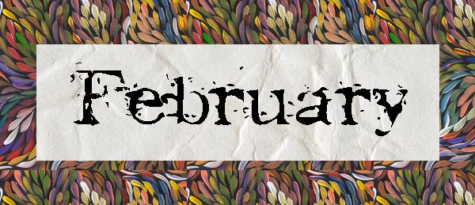
February Lore and General Info:

Astronomical Events
- 1 » New Moon
- 16 » Full Moon –Full Snow Moon or Quickening Moon, Ash Moon
Astrological Events
Depending on which astrological system you adhere to, these are the signs that show up in February of 2022. Be aware that some of these dates will vary from year to year. Unlike the Sun signs which might just shift by 1 or 2 days, the dates of the various Moon signs will vary widely from year to year. The same holds true for the Chinese Zodiac. The Celtic Tree Signs are based on an arbitrary system and stay the same from year to year.
Western Astrology
The February Sun begins in Aquarius and finishes up in Pisces:
- Aquarius: Jan 20 thru Feb 18 » Sun in Aquarius
- Pisces: Feb 18 thru Mar 20 » Sun in Pisces
The February 2022 Moon cycles through the signs as follows. You will notice that the Moon might begin the day in one sign and by the end of the day may have moved into another sign, so timing matters if you are wanting to be precise:
The moon cycles through the signs are as follows:
- Aquarius: 31 thru Feb 2 » Moon in Aquarius
- Pisces: Feb 2 thru Feb 4 » Moon in Pisces
- Aries: Feb 4 thru Feb 6 » Moon in Aries
- Taurus: Feb 6 thru Feb 9 » Moon in Taurus
- Gemini: Feb 9 thru Feb 11 » Moon in Gemini
- Cancer: Feb 11 thru Feb 14 » Moon in Cancer
- Leo: Feb 14 thru Feb 16 » Moon in Leo
- Virgo: Feb 16 thru Feb 19 » Moon in Virgo
- Libra: Feb 19 thru Feb 21 » Moon in Libra
- Scorpio: Feb 21 thru Feb 23 » Moon in Scorpio
- Sagittarius: Feb 23 thru Feb 25 » Moon in Sagittarius
- Capricorn: Feb 25 thru Feb 27 » Moon in Capricorn
- Aquarius: Feb 27 thru Mar 1 » Moon in Aquarius
The Celtic Tree Signs in February:
- Rowan: Jan 21 thru Feb 17 – Rowan Tree Month
- Ash: Feb 18 to Mar 17 – Ash Tree Month
The Alternative Celtic Zodiac is as follows:
- Poplar: Feb 1 – Feb 10
- Larch: Feb 11 – Feb 20
- Pine: Feb 21 – Mar 2
The Chinese Calendar and Zodiac
The month of February begins in the Chinese Year of the Rat. The year of the Ox (sometimes referred to as the Cow) kicks in on February 12th (Chinese lunar New Year Day) and lasts until January 31st, 2022. This will be a White Metal Ox year. Each Month is also assigned a specific animal. Here’s what shows up in February 2021.
- Cow: Jan 5 – Feb 2 (Chinese Zodiac)
- Cow: Jan 13 – Feb 4 (Lunar Calendar – 12th Lunar Month)
- Tiger: Feb 4 – Mar 4 (Chinese Zodiac)
- Tiger: Feb 4 – Mar 2 (Lunar Calendar – 1st Lunar Month)
Note: The traditional Chinese Astrology birth chart is built by the Chinese Stem Branch Calendar, not the Chinese Lunar Calendar, which I think is really confusing. Because of a difference in time zones, the lunar months will have different pattern between China and the USA.

Lucky and Unlucky Days
You might want to plan moving, traveling, major purchases, court dates, and weddings around these dates, avoiding the unlucky days and utilizing the lucky ones.
- These are the lucky days in February:
11, 21, 25, and 26. - These are the unlucky days in February:
1, 3, 7, 9, 12, 16, 17, 18 and 23.
Fatal Days
The fourth day bringeth down to death,
The third will stop a strong man’s breath.
Quick Good Luck Chant
Bad luck turn and
Bad luck flee.
Only good fortune
Comes to Me.
Place a pinch of salt on your left shoulder.

Holidays and Holy Days
Many of the holidays begin on the eve of the night before and end on the eve of the day of. It’s also important to remember that the dates of archaic festivals and feast days may vary widely depending on the source.
February 1
- 1 » The Noumenia
- 1 » Chinese New Year – Year of the Black Water Tiger begins
- 1: Vasant Panchami
- 1: Là Fhèill Brìghde
- 1: Imbolc Eve
- 1 thru 2 » Mauni Amavasya
- 1 thru 14: Old Greek Festival of Dionysus.
February 2
- 2 » Celebrating The Agathos Daimon
- 2: Groundhog Day
- 2: The Bear Wakes Up
- 2: Disting – The Charming of the Plow – dates vary
- 2: Candlemas
- 2: Imbolc
- 2: Lammas or Lughnasadh (Southern Hemisphere)
- 2: Yoruba/Santeria feast of Oya, Orisha of Death and Rebirth.
February 3
- 3: Setsubun
February 4
- 4: King Frost Day
- 4 » Spring begins (Chinese Farmer’s Calendar)
- 4 » The month of the Tiger begins – (Chinese Zodiac)
February 5
- 5 » Burning the Hom Strom
- 5: Tibetan New Year
- 5 » Saraswati Day (Bali), in honor of Batari Dewi Saraswati, the goddess of knowledge. No reading or writing is allowed on this day, books are taken to the goddess to be blessed. Dates vary.
- 5 » Sarasvati Puja – Vasant Panchami. Dates vary.
- 5: Fornacalia – The Day of the Ovens – anytime between Feb 5 and Feb 17
February 6
February 7
- 7 » Everyman’s Birthday
- 7: Day of Selene
February 8
- 8: Festival for the Broken Needles
- 8: Nirvana Day – celebrated on Feb 15 in some areas
- 8: Hari Kuyo, Japan
- 8: Kite Flying Day
February 9
- 9: Feast of Apollo
February 11
- 11: Pattern Day
- 11 » Day of Ekadashi
- 11 thru 13: The Anthesteria
February 12
- 12: Festival of Artemis – the Greek goddess of the hunt
- 12 thru 14: Borrowed Days (see also March 29-31)
February 13
- 13: Get a Different Name Day (Thomas Roy’s Calendar)
- 13 thru 21: The Parentalis – festival to honor the spirits of the ancestors
February 14
- 14: St. Valentine’s Day
- 14: Feast of Vali
February 15
- 15: Sigfrid’s Day
- 15 » Chinese Lantern Festival – 15th lunar day of 1st lunar month
- 15: Lupercalia – the festival of Lupercus, the Roman god of flocks and fertility.
- 15: Kamakura Day
February 16
- 16 » The Great Fifteenth
February 17
- 17 : Feast of Shesmu
- 17: Toshigoi – Shinto rite honoring the Kami and offering prayers for a bountiful rice harvest.
- 17: Festival of Quirinus – god of war, storms and thunder
February 18
- 18 and 19: Spenta Armaiti (Zoroastrian)
February 19
- 19 » Rain Water (Chinese Farmer’s Calendar)
February 20
- 20: Day of Tacita
February 21
- 21: Feralia – an ancient Roman Day of the Dead
- 21: Toshi-goi-no-Matsuri known (also as the Yakuyoke festival) – Shinto rite honoring the Kami and offering prayers for a bountiful rice harvest.
February 22
- 22: Caristia – Roman holiday of family reunions
February 23
February 24
- 24: Flight of the King – Regifugium
February 25
- 25: Day of Mut
February 26
- 26: Day of Nuit
- 26 » Dakini Day (Tibetan)
- 26: Hygeia’s Day
February 27
- 27 » Meatfare Sunday
- 27 » Transfiguration Sunday
February 28
- 28: Saxon Cake Day – cakes offered to the God and the Goddess.
- 28 » Bun Day or Bolludaguror
- 28: Kalevala Day – the epic poem, Kalevala is celebrated by the Finns.
- 28: Old Slavic Velja Noc – Spirits of the dead visit their living relatives, overseen by Veles, Lord of the Dead.
- 28 thru Mar 2 » Melasti (Bali) – A purification ceremony that takes place at the beach several days prior to Nyepi

Saint Days
There is a surprising amount of magick associated with Saint days This is a very short list of the Saint days in February, there are many many more. As time goes by I may end up listing them all, but for now, this is what I have.
- 2: Saint Brighid’s Day
- 3: St. Blaze Day
- 3: St. Anskar’s Day
- 3 thru 5: Festival of Saint Agatha
- 4: Feast of St. John de Brito
- 5: St Agatha’s Day
- 9: St. Apollonia’s Day
- 11: St. Caedmon’s Day
- 14: St. Valentine’s Day
- 18: Feast of Our Lady of Lourdes

Recipes For February
- Breasts of St Agatha – St Agatha’s Day
Many more seasonal recipes, including recipes for new and full moon ceremonies, ancient Greek and Roman holidays, Asian festivals and etc can be found here: Seasonal Recipes.

Notes:
Any February lore, almanac, astrological, and celebration dates that have been shared after this post was published can be found by searching the February posts to see what’s new.
A lot of work went into this post. It was compiled from various sources by Shirley Twofeathers for The Pagan Calendar, you may repost and share without karmic repercussions, but only if you give me credit and a link back to this website. Blessed be.
壬寅 Ren-Yin is the Chinese zodiac name of the Stem-Branch calendar for 2022. Each zodiac is labeled with a name of Yin-Yang Five Elements. Ren is Yang-Water. Yin is Tiger. Therefore, the name of 2022 is called Yang-Water Tiger. The color of the Water is Black in the Chinese Five Elements theory. 2022 is the Yang Black Water Tiger year.
Using Stem-Branch to count for Month, Hour, and Year sequences began around 206 B.C. during the Chin dynasty and Han dynasty. Using the season-changing information, Chinese Yin-Yang Five Element scholars converted all zodiac signs into five elements. The theory of the Five Elements becomes the foundation of Chinese fortunetelling.
The Chinese Zodiac dates back to the Qin Dynasty over 2000 years ago. As the legend goes, the Jade Emperor challenged all the animals in the Kingdom to a “Great Race.” Whoever arrived at his palace first would win his favor. The Tiger was sure that he had the race in the bag, but ended up placing third after the cunning Rat and workhorse Ox snuck in ahead of him. Thus, Tigers are extremely competitive people, known for their courage and ambition. Tigers are ambitious, but they’re also extremely generous with a drive to help others. Tigers want to win but they’re also always seeking justice.
Were you born during the Year of the Tiger?
If you were born in 1926, 1938, 1950, 1962, 1974, 1986, 1998 or 2010, you were born during the Year of the Tiger (unless your birthday falls in January, in which case, you’ll need to double check just to be sure).
Famous people born during Tiger years include Queen Elizabeth II, Christopher Lloyd, Stevie Wonder, Martin Short, Jon Bon Jovi, Leonardo DiCaprico, Penelope Cruz, Lady Gaga, Jon Batiste and Shawn Mendes. That’s some mega-talented company!
So what’s in store for the Year of the Tiger?
The Year of the Rat (2020) was about survival, and the Year of the Ox (2021) was about anchoring ourselves in a new reality. The Year of the Tiger will be about making big changes. This will be a year of risk-taking and adventure. We’re finding enthusiasm again, both for ourselves and for others. Everyone is fired up, generosity is at an all-time high and social progress feels possible again.
The Tiger is associated with Yang (masculine, active) energy. Tigers do things their own way and hate being told what to do. Expect things to rapidly change this year. Sudden disruptions in career, romance and home life should be expected. Some of us will thrive through taking great leaps, while others might crash and burn. So while it’s important to follow our intuition and run with our wildest dreams, that means we also have to keep our egos in check.
In addition to the animals, the Chinese Zodiac also cycles through five elemental types. So, this is not only the Year of the Tiger, it’s the year of the Water Tiger. Water years bring out our emotions more than any of the other elements. Water Tigers are family-oriented and have wonderful interpersonal relationships. Though they’re extremely driven and can be brash, their goal is always to do what’s best for everyone, not just for themselves.
Overall, this is a year for switching careers, building teams or getting back into creative projects. Life is short so why not be happy?
What brings Tiger luck this year?
Chinese zodiac follows that certain symbols, directions and colors are auspicious for each zodiac sign. This can apply to those born as that sign as well as for all of us during that particular zodiac year. During the Year of the Tiger those are:
- Colors: Blue, Green,
- Numbers: 1, 3, 7
- Flowers: Plum Blossom
- Direction: North
Black Water Tiger Attributes
Yang-Water is running water, river, waterfall, or ocean. Yang-Water is male and it can become flood discharge, storm rain, or surging ocean. Water is connected to wisdom in the Chinese Five Element theory. The characteristics of Yang-Water are talented, wise, acute, agile, restless, and progressive. In Chinese I-Ching, Water is connected to danger. The other traits of Yang-Water are severe, unforgiving, uncharitable, and provocative. Yang-Water is the 9th Element of 10 Heavenly Stems.
- The color of Yang-Water is black or dark blue.
- The location of Yang-Water is in the north.
Yang-Wood. Tiger is in the Wood group according to the Chinese Five Element theory. Tiger is Yang-Wood, which is the big tree in the spring. Tiger month is February, the beginning month of the spring season. The weather is still a little cold. The Wood of Tiger waits for the warm weather to grow up. Tiger is a carnivore. It is often alone, not gregarious, and difficult to get along. Tiger has a domineering temper and authoritative air. The characteristics of Tiger are bold, resolute, unyielding, dictatorial, arbitrary, ambitious, and full of self-confidence.
Yang-Wood of Tiger is related to tall trees, large Wood structures, or landmarks. Tiger also contains some Yang-Fire, which is connected to the sun, mighty power, or public figure. So Tiger has good leadership. It can start a business from scratch. It usually will suffer growing pain. Tiger likes the heat of Yin-Fire and Fire of Horse to bring up its energy. Tiger doesn’t like Pig and Monkey to bring down its passion and vitality.
Yang-Water is connected to the running water, river, or waterfall. The sign of the Yang-Water Tiger is a Tiger walking in the river. Tiger contains mainly Yang-Wood and also contains some Yang-Fire and Yang-Earth. Yang-Wood is a tall tree. A tall tree standing on the river is a sign of limitation, resolute, unyielding, or settling down. Yang-Wood is also connected to the big wooden boat. A boat on the river is a sign of traveling, relaxing, and resting. It’s a period of recharging energy.
- Tiger month is February.
- Tiger hour is from 3 a.m. to 5 a.m.
Tiger is still a little bit chilly. Tiger doesn’t have enough heat for Yang-Water. Yang-Water Tiger needs more Fire to have a prosperous life. It’s hard for Yang-Water Tiger to save money without Fire. Investment in real estate is a good policy for money management.
Black Tiger and the God of Wealth
The three major events during the Chinese New Year festival are Chinese New Year‘s Day, Chinese New Year’s Eve, and the Chinese Lantern Festival. The 4th important event should be the Welcome God of Wealth Day, which is on the 5th lunar day of the lunar year. Traditionally, companies and stores will open the business on the God of Wealth Day after the Chinese New Year statutory holidays.
Who is the God of Wealth? Different businesses have their icons of wealth. General Chao Kung-Ming, who rides on the back of the black Tiger, is one of the Gods of the Wealth. General Chao is a character in the novel of Feng-Shen Bang, (The Investiture of Gods), which is a legendary story about the war between the Shang Dynasty and Chou dynasty (around 1046 BC).
Chao Kung-Ming was the god of battle. His magic power can administer the wind, thunder, and rain. He defeated many wizards, sorcerers, and deities. But he was killed in the end after losing his magic weapons. After his death, Chao Kung-Ming was delegated as the officer in charge of the properties, such as gold, jewelry, and treasures. He also has the authority to give people fortune and happiness. More story about Chao Kung-Ming and other Gods of the Wealth is on the “The Chinese God of Wealth” page.
General Chao’s Black Tiger was a ferocious carnivore. Since the wild Tiger ate quite a few humans and livestock, many people tried and failed to kill it. Chao Kung-Ming tamed the Black Tiger to save people’s life. The Black Tiger implies the arrival of the God of the Wealth.
Source:
I got totally behind on getting the Pagan Calendar updated for 2022. I really am working on it, I promise. Here’s some nice relaxing music you can listen to while you wait!
With winter setting in, those born in January have two birth flowers—the carnation and snowdrop. Whether they’re your “birth” flowers or not, these colorful flowers are sure to lift your spirits during these cold winter months.
Snowdrops
I’m not sure why Snowdrops are assigned to the month of January because these little flowers are also known as “Candlemas Bells”. February 2nd is Candlemas (Festival Day of Candles), and Imbolc. The ancient festival marks the midpoint of winter and some recognize it as the last day of the forty day Christmas season. In the catholic tradition, candles were brought into the church and blessed as a symbol of hope and light. In a time of no electric lights, candlelight offered great protection and comfort during the dark days of winter.
By producing their own heat, snowdrops actually melt the snow in their surroundings. Like candles, Snowdrops offer us our own light of hope in the grey of winter days. They are the emblems of friendship in adversity, harbingers of spring.
The first sight of snowdrops growing wild represents the passing of sorrow. In various religions, they are a sign from the gods that good times will come once more. According to one Christian tale, an angel turned falling snowflakes into flowers to give Adam and Eve a sign of hope after evicting them from the Garden of Eden.
The fact that snowdrops are often found, in abundance, in the old convent gardens, it was believed that this little white flower was sacred to virgins. For this reason, it was dedicated to the Virgin Mary. In some places, during the Candlemas celebration, it was customary for young women, wearing white gowns, to walk in procession carrying snowdrops in their hands.
It was often said that any one wearing a snowdrop would have only pure and lofty thoughts; and that if a young girl ate the first snowdrop she found in spring, neither sun nor wind would tan her that summer.
Carnations
Inhaling the gorgeous scent of the carnation flower will immediately enhance emotions of joy and happiness, so the addition of the essential oil is perfect for incenses and oils to dispel depression and disappointment. Brush flowers down your body to cleanse. After reaching the feet, break the stems to trap and hold the negative energy. This flower also helps relieve the depression of winter.
Keep red carnations on the altar to increase your energy level and to create more optimism in life. Once worn by Witches to prevent untimely death on the scaffold, it is used in power incenses and placed on the altar to produce added energy.
Dry nine red carnations in the Sun, crumble them and separate from the stems. Pour one dram carnation essential oil over them, mix well and smolder on charcoal for a tremendously powerful incense. Produces tons of energy!
Used to remove hexes and negative energy, the carnation is especially good for clearing out love problems. Add white and red carnations or essential oil to bathwater to stabilize your love life. Carnation flowers attract abundance as well, either as a bouquet or in a formula.
Including carnations or carnation oil in a blend for the sickroom is perfect to aid in the mental aspects of healing. If your eyes are bothered, rub them with red carnations – it will help. This belief comes from the biblical legend in which carnations sprang up where the Mother of Jesus’s tears fell as she cried over her son’s crucifixion.
Carnations have a history of being brewed into tea to help reduce stress and restore energy. Carnation tea has also been used to reduce fever and treat stomach aches. In addition to tea, carnation oil is used in beauty products to moisturize skin, minimize wrinkles, and treat skin conditions.
Source: Magickal Ingredients
There is a lot to celebrate in January. This is a list of pretty much everything that goes on during this first month of the year. Many of these dates change from year to year. The days that change are marked with this » symbol.
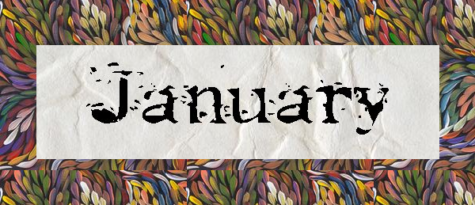
Astronomical Events
- 1 thru 5: Quadrantids Meteor Shower
- 2 » New Moon
- 17 » Full Moon, Wolf Moon, Birch Moon
- 31 » New Moon

Astrological Events
Depending on which astrological system you adhere to, these are the signs that show up in January of 2022. Be aware that some of these dates will vary from year to year. Unlike the Sun signs which might just shift by 1 or 2 days, the dates of the various Moon signs will vary widely from year to year. The same holds true for the Chinese Zodiac. The Celtic Tree Signs are based on an arbitrary system and stay the same from year to year.
Western Astrology
The January Sun begins in Capricorn and finishes up in Aquarius:
- Capricorn: Dec 21 thru Jan 20 » Sun in Capricorn
- Aquarius: Jan 20 thru Feb 18 » Sun in Aquarius
The January 2022 Moon cycles through the signs as follows. You will notice that the Moon might begin the day in one sign and by the end of the day may have moved into another sign, so timing matters if you are wanting to be precise:
- Capricorn: Jan 1 thru Jan 3 » Moon in Capricorn
- Aquarius: Jan 3 thru Jan 6 » Moon in Aquarius
- Pisces: Jan 6 thru Jan 8 » Moon in Pisces
- Aries Jan 8 thru Jan 10 » Moon ins Aries
- Taurus: Jan 10 thru Jan 13 » Moon in Taurus
- Gemini: Jan 13 thru Jan 15 » Moon in Gemini
- Cancer: Jan 15 thru Jan 18 » Moon in Cancer
- Leo: Jan 18 thru Jan 20 » Moon in Leo
- Virgo: Jan 20 thru Jan 22 » Moon in Virgo
- Libra: Jan 22 thru Jan 25 » Moon in Libra
- Scorpio: Jan 25 thru Jan 29 » Moon in Scorpio
- Capricorn: Jan 29 thru Jan 31 » Moon in Capricorn
- Aquarius: 31 thru Feb 2 » Moon in Aquarius
The Celtic Tree Signs in January:
- Birch: Dec 24 to Jan 20 – Birch Tree Month
- Rowan: Jan 21 thru Feb 17 – Rowan Tree Month
The Alternative Celtic Zodiac is as follows:
- Apple: Dec 22 – Jan 1
- Fir: Jan 2 – Jan 11
- Elm: Jan 12 – Jan 22
- Cypress: Jan 23 – Jan 31
The Chinese Calendar and Zodiac
According to the Chinese Zodiac we are currently in the Year of the Ox. Each Moon is also assigned a specific animal. Here’s what shows up in January 2022.
- Rat: Dec 7 (2021) – Jan 4 (Chinese Zodiac)
- Rat: Dec 4 (2021) – Jan 2 (Lunar Calendar – 11th Lunar Month)
- Cow: Jan 5 – Feb 2 (Chinese Zodiac)
- Cow: Jan 3 – Feb 1 (Lunar Calendar – 12th Lunar Month)
Note: The traditional Chinese Astrology birth chart is built by the Chinese Stem Branch Calendar, not the Chinese Lunar Calendar, which I think is really confusing. Because of a difference in time zones, the lunar months will have different pattern between China and the USA.

Lucky and Unlucky Days
You might want to plan moving, traveling, major purchases, court dates, and weddings around these dates, avoiding the unlucky days and utilizing the lucky ones.
- These are the lucky days in January:
1, 2, 15, 26, 27 and 28. - These are the unlucky days in January:
1, 2, 3, 4, 6, 11, 12, 13, 14, 20 and 21.
Interestingly, the 1st and the 2nd are both lucky and unlucky.
Fatal Days
Of this first month the opening day
And seventh, like a sword will slay.
Quick Good Luck Chant
Bad luck turn and
Bad luck flee.
Only good fortune
Comes to Me.
Place a pinch of salt on your left shoulder.

January Lore and General Info:
- The Theme For January
- January Celebrations and Rituals
- January Activities and Lore
- January Moon Names
- The Flowers of January
Holidays and Holy Days
Many of the holidays begin on the eve of the night before and end on the eve of the day of. It’s also important to remember that the dates of archaic festivals and feast days may vary widely depending on the source. Some of these dates change from year to year because they are based on the phase of the moon or the days of the week. The days that change are marked with this » symbol.
January 1
- 1: New Year’s Day
- 1: Shichi Fukujin – Seven Deities of Luck Celebration
- 1: Gantan-sai – Shinto New Year Holy Day, see also Shogatsu
- 1: Ethics Day – Day to commit to cultivating personal honor.
- 1: Taos Pueblo Turtle Dance
- 1: Apple Gifting Day
- 1: Daisy Day
- 1: The Circumcision of Jesus
- 1 » Ciwaratri or Siwa Ratri (Bali) – Night of the god Shiva. A time for contemplation and purification, the Balinese do not sleep for one night.
- 1: Feast of Fools
- 1: Jump Up Day
- 1 thru 3: Kalends of January
- 1 thru 4: Tewa Turtle Dance – celebrating life and the first Creation, when Sky Father embraced Earth Mother and all life was conceived.
- 1 thru 6: Shogatsu/Shinto New Year’s Festival – The Kami (Nature Spirits) of the four directions are honored, and prayers for happiness, good health, and prosperity are made.
January 2
- 2 » Night of Hekate Suppers
- 2: Advent of Isis
- 2: Nativity of Inanna
- 2: Happy Mew Year For Cats (Thomas Roy’s Calendar)
- 2: Mange Loa, also called Breaking of the Cakes, or Jan Case Gateaux
January 3
- 3 » Handsel Monday
- 3 » Plough Monday
- 3 » Distaff Day
- 3: Festival of Pax – alternative date Jan 30
- 3: Snow Day
- 3 » The Noumenia
January 4
January 5
- 5 » Little Cold begins (Chinese Farmer’s Calendar)
- 5: Festival of Lares Compitales
- 5: Feast of Old Roman Goddess Befana
- 5: Twelfth Night
- 5: Avian Day – Day to honor all creatures of the air and to meditate on Deity manifesting as birds.
- 5: The Voyage of Hathor to see her Seven Sisters
- 5 or 6: Festival of Kore
- 5 and 6: Feast of God Poseidon – dates varied from Dec – Jan
January 6
- 6: Epiphany
- 6: Dia de los Reyes – Three Kings Day
- 6: Haxey Hood (English)
- 6: Taos Pueblo Deer or Buffalo Dance
January 7
- 7: Russian Christmas
- 7: Nativity of Christ
- 7: Genna – Ethiopian Christmas
- 7: Koshogatsu – Shinto rite honoring Goddess Izanami, partner of God Izanagi.
- 7: Feast of Sekhmet – Egyptian New Year’s Day (alternative date Aug 7)
January 8
- 8: Midwives’ Day
- 8 thru 9: The Haloa
January 9
- 9: Agonalia – Festival of Janus (alternative date Jan 11)
- 9: Raud the Strong’s Day
January 10
- 10 » Bodhi Day
- 10: Geraint’s Day (Welsh)
- 10 » Seijin-no-hi – Coming of Age Day
January 11
- 11 and 15: The Carmentalia – Festival of Carmenta
January 12
- 12: The Compitalia
- 12 thru 16: Rustic Dionysia (alternative date Nov 28)
January 13
- 13 » Day of Ekadashi (Hindu)
- 13 thru 25: Mid Winter Blot (Midvetr, Midvetrarblot, Jordblot, Thorrablot, Freyrblot) – Old Norse Mid Winter Feast.
January 14
- 14: Thorrablot
- 14 thru 15: Dondoyaki
- 14 thru 17 » Pongal – Festival of Makar Sankranti
January 15
- 15: Black Christ Festival (Guatemala)
- 15 : Dōsojin Matsuri – Japanese Fire Festival – dates may vary
January 16
- 16: Festival of Concordia
- 16 » World Religions Day – 3rd Sunday in January
- 16 and 17: Old Greek festival in which offerings were made to the Wind Gods of the Eight Directions.
- 16 and 17 » Tu B’shvat – New Year for Trees
January 17
- 17: Good Luck Day – Festival of Felicitas
- 17 thru 20 » Mahayana New Year – starts on the first full moon in January
January 19
- 19: Blessing of the Waters
- 19: Popcorn Day
- 19: Timkat – Ethiopian Epiphany
- 19: Festival of the Lights of Neith
January 20
- 20: World Religions Day
- 20 » Severe Cold begins (Chinese Farmer’s Calendar)
January 21
- 21 » Thorrablot (Þorrablót)
January 24
- 24: Feriae Sementivae – Blessing the Seeds
- 24: Gold Rush Day
- 24: Festival of Ekeko (Bolivian) – lasts 3 weeks
- 24 thru Feb 6: Iroquois Mid-Winter Ceremony – dates vary, generally the last part of January or the first part of February
January 25
- 25: Burns Supper
January 26
- Jan 26 » Kitchen God Festival (Xiao Nian Festival)
January 27
- 27 » Dakini Day (Tibetan)
- 27 thru Feb 3: Powamu Festival (Hopi) – dates vary, an 8 day festival held around the end of January or beginning of February
January 28
- 28: Daisy Day
January 29
- 29: Gamelion Noumenia – Old Greek festival honoring all the Gods and Goddesses.
- 29: Red Carnation Day
January 30
- 30: Up Helly Aa – Scottish Viking celebration
- 30 thru 31: Feast of the Charities – dates vary widely also listed as Jan 17 – 18, Apr 18 – 19, May 26, Jul 9 – 10, or Oct 13.
- 30 thru Feb. 2: Februalia
January 31
- 31: Disfest/Disablot
- 31 » Li Chun (Chinese New Year’s Eve)
- 31 thru Feb 3: Old European Lunar New Year – Celebration of the Triple Goddess (Goddess of the Moon and the Seasons) being transformed from the Crone into the Virgin; celebrated with ritual bathing of divine images.
- 31 thru Feb 6 » Sami Week and Reindeer Race (Norway)
- 31 thru Feb 8: Navajo Sing – Festival in preparation for the coming agricultural season; celebrated with prayer, chanting, dancing, and healing.

Saint Days
There is a surprising amount of magick associated with Saint days This is a very short list of the Saint days in January, there are many many more. As time goes by I may end up listing them all, but for now, this is what I have.
- 2: St Basil’s Day (alternative dates include – January 1, January 10, January 14 or 15, January 30, June 14)
- 13: St Knut’s Day
- 16: St Peter’s Day – also Jun 29
- 21: Eve of St Agnes
- 22: Feast of St Agnes
- 25: St Paul’s Day
- 25: St Dwynwen’s Day

Recipes For January
Many seasonal recipes, including recipes for new and full moon ceremonies, ancient Greek and Roman holidays, Asian festivals and etc. can be found here: Seasonal Recipes.

Notes:
Any January lore, almanac, astrological, and celebration dates that have been shared after this post was published can be found by searching the January posts to see what’s new.
A lot of work went into this post. It was compiled from various sources by Shirley Twofeathers for The Pagan Calendar, you may repost and share without karmic repercussions, but only if you give me credit and a link back to this website. Blessed be.
There is a lot to celebrate in December. This is a list of pretty much everything that goes on during the last month of the year. Many of these dates change from year to year. The days that change are marked with this » symbol.
December Lore and General Info

Astronomical Events
- Sept 7 thru Dec 10: Taurids Meteor Shower
- Dec 4 » Total Solar Eclipse
- Dec 4 » New Moon
- Dec 7 thru Dec 17: Geminids Meteor Shower
- Dec 14: Halcyon Days Begin
- Dec 17 thru Dec 25: Ursids Meteor Shower
- Dec 19 » Full Moon – Big Winter Moon
- Dec 21: Winter Solstice
Astrological Events
Depending on which astrological system you adhere to, these are the signs that show up in December of 2021. Be aware that some of these dates will vary from year to year. Unlike the Sun signs which might just shift by 1 or 2 days, the dates of the various Moon signs will vary widely from year to year. The same holds true for the Chinese Zodiac. The Celtic Tree Signs are based on an arbitrary system and stay the same from year to year.
The December Sun begins in Sagittarius and finishes up in Capricorn:
- Nov 22 thru Dec 21 » Sun in Sagittarius
- Dec 21 thru Jan 20, 2022 » Sun in Capricorn
The moon cycles through the signs as follows:
- Nov 29 – Dec 1 » Moon in Libra
- Dec 1 – Dec 3 » Moon in Scorpio
- Dec 3 – Dec 5 » Moon in Sagittarius
- Dec 5 – Dec 7 » Moon in Capricorn
- Dec 7 – Dec 9 » Moon in Aquarius
- Dec 9 – Dec 11 » Moon in Pisces
- Dec 11 – Dec 14 » Moon in Aries
- Dec 14 – Dec 16 » Moon in Taurus
- Dec 16 – Dec 19 » Moon in Gemini
- Dec 19 – Dec 21 » Moon in Cancer
- Dec 21 – Dec 24 » Moon in Leo
- Dec 24 – Dec 26 » Moon in Virgo
- Dec 26 – Dec 28 » Moon in Libra
- Dec 28 – Dec 30 » Moon in Scorpio
- Dec 30 – Jan 1, 2022 » Moon in Sagittarius
You will notice that the Moon might begin the day in one sign and by the end of the day may have moved into another sign, so timing matters if you are wanting to be precise.
The Celtic Tree Signs in December:
- Elder: Nov 25 – Dec 22
- Pine: Dec 22 (tree of the Winter Solstice)
- Dec 23 – Is not ruled by any tree. It is the traditional day of the proverbial “Year and a Day” in the earliest courts of law.
- Birch: Dec 24 – Jan 20 – Month of the Birch Tree
The Alternative Celtic Zodiac is as follows:
- Hornbeam: Dec 1 – Dec 10
- Aspen: Dec 11 – Dec 20
- Beech: Dec 21 (Winter Solstice)
- Apple: Dec 22 – Jan 1
The Chinese Calendar and Zodiac
We are currently in the year of the Ox (sometimes referred to as the Cow). Each Month is also assigned a specific animal. Here’s what shows up in December 2021.
- Pig » Nov 7 – Dec 6 (Chinese Zodiac – Stem Branch Calendar)
- Pig » Nov 5 – Dec 3 (Lunar Calendar – 10th Lunar Month)
- Rat » Dec 7 – Jan 4, 2022 (Chinese Zodiac – Stem Branch Calendar)
- Rat » Dec 4 – Jan 2, 2022 ( Lunar Calendar – 11th Lunar Month)
Note: The traditional Chinese Astrology birth chart is built by the Chinese Stem Branch Calendar, not the Chinese Lunar Calendar, which I think is really confusing. Because of a difference in time zones, the lunar months will have a different pattern between China and the USA.
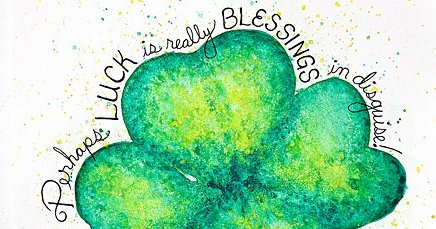
Lucky and Unlucky Days
You might want to plan moving, traveling, major purchases, court dates, and weddings around these dates, avoiding the unlucky days and utilizing the lucky ones. Interestingly, the 15th is both lucky and unlucky.
- These are the lucky days in December:
15, 19, 20, 22, 23 and 25. - These are the unlucky days in December:
6, 11, 14, 15 and 21.
Fatal Days
The seventh is a fatal day for human life,
The tenth is with a serpent’s venom rife.
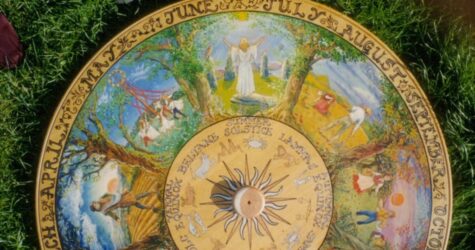 Holidays and Holy Days
Holidays and Holy Days
Many of the holidays begin on the eve of the night before and end on the eve of the day of. It’s also important to remember that the dates of archaic festivals and feast days may vary widely depending on the source.
December 1
- 1: The Festival of Poseidon – the Greek god of the sea. Poseidon is also the god of rebirth.
- 1 thru 24: Advent
December 3
- 3: The Sementivaem – the second festival of Tellus, the Roman earth goddess.
- 3 » Night of Hekate Suppers
December 4
- 4: Bona Dea – a Roman festival for women only
December 5
December 6
December 14
- 14: Halcyon Days Begin
- 14 » Day of Ekadashi (Hindu)
December 15
- 15: The second Festival of Consus – the Roman god of good council
- 15: Bill of Rights Day
December 17
- 17 » Friday the 17th
- 17: Beginning of Saturnalia – festival of Saturn, the Roman god of agriculture. The most popular Roman festival, for on this day the roles of master and slave were reverted.
December 18
- 18: Eponalia
December 19
- 19: The Festival of Ops – second festival of Ops, Roman goddess of harvest.
December 21
- 21: Poseidonia of Aegina – possibly lasting as long as 2 months
- 21: Death of Tammuz – Ancient Babylonian Yule Ritual
- 21: Divalia – Angeronalia, festival of Angerona, the Roman goddess of secrecy.
- 21: The Dōngzhì Festival
- 21: Yule (In the southern hemisphere this is Litha)
December 23
- 23: The Larentalia (Larentinalia) – festival of Acca Larentia the Roman goddess who gave the early Romans their land
December 24
- 24: Birth of the Unconquered Sun ~ Sol Invictus
- 24: Christmas Eve
December 25
- 25: Christmas
- 25: The Birthday of Mithra – the Persian god of light and wisdom.
- 25: Festival of the Invincible Sun God
- 25: Feast of Frau Halle – Germanic goddess
December 26
- 26: Boxing Day
- 26: Day of the Wren
December 27
- 27: Mother Night
December 28
- 28: Feast of the Holy Innocents
- 28: Childremass
- 28 » Dakini Day (Tibetan)
- 28: Dyzymas Day
December 29
- 29: Feast of Fools
- 29 thru Jan 3: Shōgatsu (Shinto)
December 30
- 30 » Day of Ekadashi (Hindu)
- 30: Bringing in the Boar
December 31
- 31: Watch Night
- 31: New Year’s Eve
- 31: Festival of Hogmanay
- 31: Stonehaven Fireball Ceremony
- 31: First Footing
 Saint Days
Saint Days
There is a surprising amount of magick associated with Saint days. This is a very short list of the Saint days in December, there are many many more. As time goes by I may end up listing them all, but for now, this is what I have.
- 6: Saint Nicholas Day
- 12: Feast day of Our Lady of Guadalupe
- 13: St. Lucy’s Day
- 26: St Stephen’s Day
- 27: St John’s Day
 Recipes For December
Recipes For December
- Anise Cookies For Yule – Yule, Christmas and the Winter Solstice
- Figgy Pudding – Yule, Christmas and the Winter Solstice
- Simple Wassail Recipe – Yule, Christmas and the Winter Solstice
- Swedish Yule Bread – Yule, Christmas and the Winter Solstice
- Traditional Wassail Recipe For Yule – Yule, Christmas and the Winter Solstice
- Yule Eggnog Bread – Yule, Christmas and the Winter Solstice
- Glutinous Rice Balls – Tang Yuan – Winter Solstice
- Lamb Dumplings – Dongzhi – Winter Solstice
Many more seasonal recipes, including recipes for new and full moon ceremonies, ancient Greek and Roman holidays, Asian festivals and etc can be found here: Seasonal Recipes.
 Notes:
Notes:
Any December lore, almanac, astrological, and celebration dates that have been shared after this post was published can be found by searching the December posts to see what’s new.
A lot of work went into this post. It was compiled from various sources by Shirley Twofeathers for The Pagan Calendar, you may repost and share without karmic repercussions, but only if you give me credit and a link back to this website. Blessed be.




















